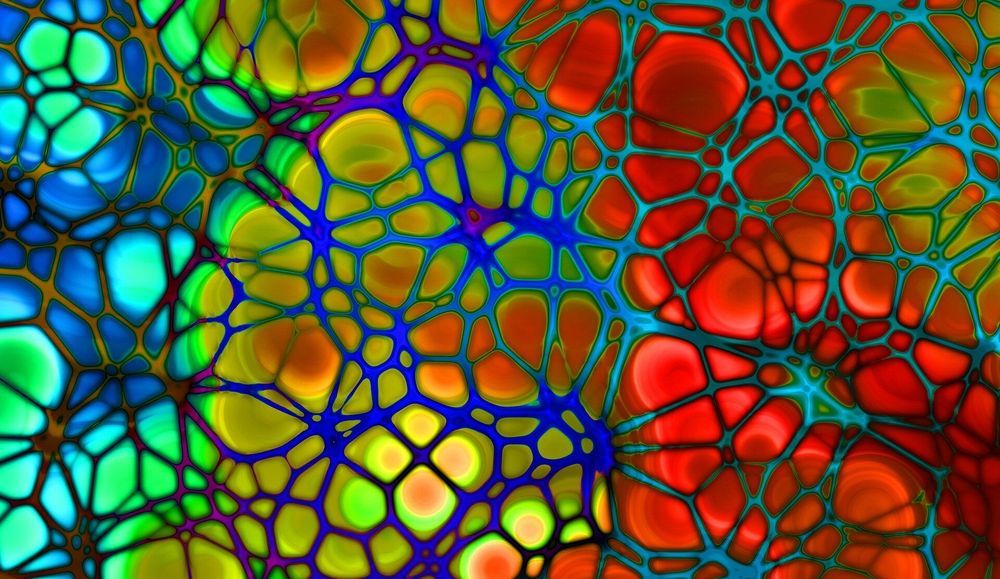Archive for the ‘materials’ category: Page 218
May 21, 2019
Scientists Have Created Shape Shifting Liquid Metal That Can Be Programmed
Posted by Quinn Sena in categories: innovation, materials

In a terrifying breakthrough similar to the metal morphing villain in Terminator 2, scientists at the University of Sussex and Swansea University have discovered a way to apply electrical charges to liquid metal and coax it into 3D shapes such as letters and even a heart.
This discovery has been called an “extremely promising” new kind of material that can be programmed to alter its shape.
Continue reading “Scientists Have Created Shape Shifting Liquid Metal That Can Be Programmed” »
May 20, 2019
Deflecting Earthquakes The Way Ancient Romans Did It
Posted by Quinn Sena in category: materials
A recent French study indicates that the ancient Romans may have figured out how to deal with earthquakes by simply deflecting the energy of the waves using structures that resemble metamaterials. These are materials which can manipulate waves (electromagnetic or otherwise) in ways which are normally deemed impossible, such as guiding light around an object using a special pattern.
In a 2012 study, the same researchers found that a pattern of 5 meter deep bore holes in the ground was effective at deflecting a significant part of artificially generated acoustic waves. One of the researchers, [Stéphane Brûlé], noticed on an aerial photograph of a Gallo-Roman theater near the town of Autun in central France that its pattern of pillars bore an uncanny resemblance to this earlier experiment: a series of concentric (semi) circles with the distance between the pillars (or holes) decreasing nearer the center.
Further research using archaeological data of this theater site confirmed that it did appear to match up the expected pattern if one would have aimed to design a structure that could successfully deflect the acoustic energy from an earthquake. This raises the interesting question of whether this was a deliberate design choice, or just coincidence.
Continue reading “Deflecting Earthquakes The Way Ancient Romans Did It” »
May 20, 2019
Geologists Just Discovered a Source of Volcanoes Deeper Than Ever Before
Posted by Quinn Sena in categories: materials, space
Researchers have pinpointed a previously unknown source of volcanoes in the extreme depths of Earth — in the transition zone between the upper and lower mantle.
Until now, we thought we had a handle on the ways in which volcanoes form, welling up from the molten regions in the upper mantle beneath our planet’s crust, but the new discovery takes things much farther down.
In the Bermuda islands, which sit atop an extinct volcanic seamount, geologists have found the first direct evidence that material from the transition zone, between 400 and 650 kilometres (250 and 400 miles) below Earth’s surface, can bubble up and be spewed out of volcanoes.
Continue reading “Geologists Just Discovered a Source of Volcanoes Deeper Than Ever Before” »
May 18, 2019
Scientists Discover a New Way Volcanoes Form, Sheds Light on Bermuda’s Origins
Posted by Genevieve Klien in category: materials
The ancient, now-dormant volcano on which the island of Bermuda sits formed in a completely unique way, scientists have discovered. The finding not only solves a long-standing mystery about the island’s volcanic origins, but it also describes a new way volcanoes form.
In studying a rock core sample taken from Bermuda, drilled from 1972, geoscientists have discovered the first direct evidence that material from deep within Earth’s mantle transition zone —a layer rich in water, crystals and melted rock — can percolate to the surface to form volcanoes.
Researchers have long known that volcanoes form when tectonic plates converge, or as a result of mantle plumes that rise from the core-mantle boundary to make hotspots at Earth’s crust.
Continue reading “Scientists Discover a New Way Volcanoes Form, Sheds Light on Bermuda’s Origins” »
May 17, 2019
Single molecule magnet used as a scanning magnetometer
Posted by Quinn Sena in categories: materials, particle physics
A team of researchers from the University of California and Fudan University has developed a way to use a single molecule magnet as a scanning magnetometer. In their paper published in the journal Science, the group outlines their research which involved demonstrating their sensor scanning the spin and magnetic properties of a molecule embedded in another material.
As scientists continue their quest to squeeze ever more data onto increasingly smaller storage devices, they are exploring the possibility of using the magnetic state of a single molecule or even an atom—likely the smallest possible memory element type. In this new effort, the researchers have demonstrated that it is possible to use a single molecule affixed to a sensor to read the properties of a single molecule in another material.
To create their sensor and storage medium, the researchers first absorbed magnetic molecules of Ni(cyclopentadienyl)2 onto a plate coated with silver. Then, they pulled a nickelocene molecule from the silver surface and applied it to the tip of a scanning tunneling microscope sensor. Next, they heated an adsorbate-covered surface to 600 millikelvin and then moved the sensor tipped with the single molecule close to the surface and read the signals received by the probe as the two molecules interacted.
Continue reading “Single molecule magnet used as a scanning magnetometer” »
May 16, 2019
New Horizons’ far-out findings from solar system’s Kuiper Belt turn into a cover story
Posted by Alberto Lao in categories: materials, space travel
The space snowman known as 2014 MU69 or Ultima Thule added to its celebrity today by showing up on the cover of the journal Science, with the first peer-reviewed results from an encounter with NASA’s New Horizons spacecraft laid out within.
Close study of the two-lobed object — which orbits 4 billion miles from the sun within a sparse belt of icy material known as the Kuiper Belt — could shed light on how the solar system was formed, said New Horizons principal investigator Alan Stern, a planetary scientist at the Southwest Research Institute.
“We’re looking into the well-preserved remnants of the ancient past,” Stern said in a news release. “There is no doubt that the discoveries made about Ultima Thule are going to advance theories of solar system formation.”
May 16, 2019
Atomically thin light emitting device opens the possibility for ‘invisible’ displays
Posted by Quinn Sena in categories: futurism, materials
The device opens the door to invisible displays on walls and windows – displays that would be bright when turned on but see-through when turned off — or in futuristic applications such as light-emitting tattoos, according to the researchers.
“The materials are so thin and flexible that the device can be made transparent and can conform to curved surfaces,” said Der-Hsien Lien, a postdoctoral fellow at UC Berkeley and a co-first author along with Matin Amani and Sujay Desai, both doctoral students in the Department of Electrical Engineering and Computer Sciences at Berkeley.
Their study was published March 26 in the journal Nature Communications. The work was funded by the National Science Foundation and the Department of Energy.
May 15, 2019
A hydrogel that can stop bleeding from an artery
Posted by Quinn Sena in categories: biotech/medical, materials

A team of researchers affiliated with several institutions in China has developed a hydrogel that can stop bleeding from a punctured artery. In their paper published in the journal Nature Communications, the group describes how the hydrogel was made and how well it worked on test animals.
Uncontrolled bleeding is a very serious situation, both during surgical procedures and as a result of trauma. In most cases, it is the result of damage to a major artery or an organ like the liver. In all cases, immediate action must be taken or the victim will die. Currently, treatment for such wounds involves clamping the artery and then using sutures to close the wound. In the past, researchers have attempted to create a type of glue to stem such wounds, but thus far, none of them has worked as hoped—they were either made of toxic materials or were not strong enough to stand up to the high liquid pressure in the bloodstream. In this new effort, the researchers have developed a new type of hydrogel that solves both problems.
Continue reading “A hydrogel that can stop bleeding from an artery” »
















